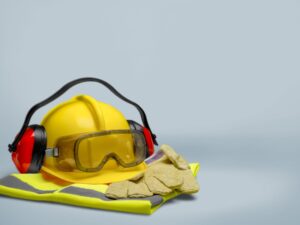
Closing the Gender Gap: Promoting Diversity & Inclusion in HSE
The Health, Safety, and Environment (HSE) field, traditionally male-dominated, is experiencing gradual but significant changes towards gender diversity. This evolution is critical not just for equity but for enhancing innovation, creativity, and effectiveness in safety and environmental initiatives. Promoting diversity and inclusion in HSE can drive positive outcomes across various dimensions of organisational performance.
Importance of Gender Diversity in HSE
Innovation & Creativity
Diverse teams bring varied perspectives, leading to innovative solutions and more creative problem-solving approaches. Women in HSE roles often provide unique insights that can help identify potential risks and opportunities that homogeneous teams might overlook.
Enhanced Decision-Making
Gender-diverse teams benefit from a wider range of perspectives, leading to more comprehensive risk assessments and decision-making processes. This holistic view is particularly valuable in HSE, where safety decisions can have significant consequences.
Improved Organisational Performance
Research consistently shows that diverse teams tend to outperform their less diverse counterparts. In HSE, this translates into more effective safety protocols, improved compliance, and better overall environmental and safety performance.
Strategies for Fostering an Inclusive Work Environment
Active Recruitment & Mentorship
To attract more women into HSE roles, organisations should actively recruit from diverse talent pools and provide mentorship programs. Mentorship helps women navigate the challenges of the industry and develop the confidence needed to succeed.
Inclusive Policies & Practices
Establishing policies that support work-life balance, such as flexible working hours and parental leave, can make HSE roles more accessible to women. Ensuring that these policies are actively communicated and implemented is crucial.
Training & Development
Offering training programs focused on diversity and inclusion can raise awareness and equip employees with the tools to create a more inclusive work environment. These programs should cover unconscious bias, inclusive leadership, and effective communication.
Support Networks
Creating or supporting networks such as the Women in Health and Safety (WiHS) can provide a platform for women to share experiences, seek advice, and build professional relationships. Such networks can be instrumental in fostering a sense of community and support.
Visible Role Models
Promoting women to visible leadership positions within HSE can inspire others and demonstrate that success is attainable. Role models play a crucial role in shaping aspirations and breaking down barriers.
Case Studies and Examples
Leeds Beckett University
The university’s health and safety courses have seen a significant increase in female enrolment, with women outnumbering men at the postgraduate level by 60/40. This shift is attributed to targeted recruitment efforts and the promotion of HSE as a viable career path for women.
Women in Health & Safety Network
Founded to support women in HSE, this network provides events, mentoring, and a sense of community. It helps women navigate the challenges of working in a predominantly male industry and fosters solidarity among its members.
Corporate Practices
Companies that integrate Environmental, Social, and Governance (ESG) criteria into their operations often emphasise gender diversity as a component of their sustainability measures. Firms like Acre have adjusted their recruitment strategies to prioritise inclusive hiring practices, leading to a notable increase in female leadership within HSE roles.
Challenges and Areas for Improvement
Pay Gap
Despite progress, a significant gender pay gap persists in HSE. At the Health and Safety Executive (HSE), for instance, the median pay gap between men and women is 16.8%. Addressing this disparity requires a focus on equal pay for equal work and transparent salary structures.
Representation at Senior Levels
Women are underrepresented in senior HSE roles. Increasing female representation in leadership positions involves not only promoting capable women but also creating pathways for advancement and ensuring that selection processes are free from bias.
Cultural Barriers
The perception of HSE as a male-dominated field can deter women from pursuing careers in this area. Overcoming these cultural barriers involves changing the narrative around HSE careers and highlighting the value of diverse perspectives in enhancing safety and environmental outcomes.
Additional Insights
Leadership Development Programs
Organisations should consider implementing leadership development programs tailored for women in HSE. These programs can focus on building leadership skills, enhancing strategic thinking, and providing opportunities for women to lead high-impact projects.
Regular Feedback Mechanisms
Establishing regular feedback mechanisms that allow women to share their experiences and challenges can help organisations understand barriers and develop targeted interventions. This can include anonymous surveys, focus groups, and open forums.
Championing Success Stories
Highlighting and celebrating the successes of women in HSE roles can create a positive narrative that encourages more women to pursue careers in this field. Success stories can be shared through internal communications, industry publications, and social media.
Inclusive Recruitment Practices
To attract a diverse pool of candidates, job descriptions should be carefully crafted to avoid gendered language and emphasise the value of diverse experiences. Recruitment panels should also be diverse to minimise bias in the selection process.
Conclusion
Closing the gender gap in HSE is essential for harnessing the full potential of diverse teams. By implementing strategies that promote inclusion and support women’s advancement, organisations can benefit from enhanced innovation, improved decision-making, and better overall performance.
Incorporating women’s unique perspectives can lead to more comprehensive safety strategies, innovative problem-solving, and a broader understanding of environmental issues. Gender diversity enriches team dynamics and fosters a culture where diverse viewpoints are valued and integrated into organisational processes.
The journey towards gender diversity and inclusion in HSE is ongoing, but with concerted effort, it is possible to create a more equitable and effective industry. Organisations must continuously evaluate and refine their diversity initiatives to address evolving challenges and seize new opportunities for improvement.
By fostering an inclusive culture and breaking down existing barriers, HSE can not only achieve greater gender balance but also set a benchmark for other sectors striving for diversity and inclusion. This transformation is not just a moral imperative but a strategic advantage that will drive the industry forward in a rapidly changing world.








